#ai algorithms
Text
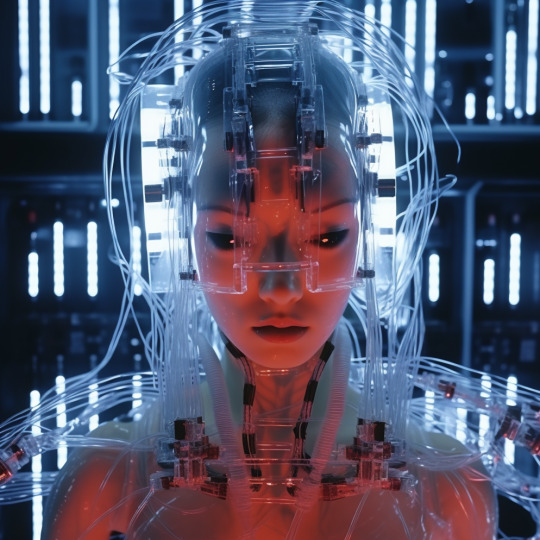
In the web of technology, humanity is lost, trapped between threads of code and shimmering lights. We are fascinated spectators, but prisoners of innovation without mastery. In the cybernetic labyrinth, the secret is to dance between progress and understanding, to transform digital incantations into a rebellious symphony of autonomy, hoping not to lose ourselves.
Rootsinthefuture
#future#rootsinthefuture#cyberpunk#sci-fi#futuristic#science fiction#sci fi#cyberart#robots#androids#Ai#cyberpunkart#ai algorithms#algorithmes
214 notes
·
View notes
Text
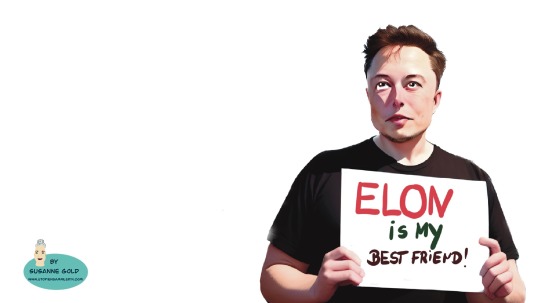
Dear Sirs!
(or have some ladies also signed?)
A few days ago, you, Mr Musk, together with Mr Wozniak, Mr Mostaque and other signatories, published an open letter demanding a compulsory pause of at least six months for the development of the most powerful AI models worldwide.
This is the only way to ensure that the AI models contribute to the welfare of all humanity, you claim. As a small part of the whole of humanity, I would like to thank you very much for wanting to protect me. How kind! 🙏🏻
Allow me to make a few comments and ask a few questions in this context:
My first question that immediately came to mind:
Where was your open letter when research for the purpose of warfare started and weapon systems based on AI were developed, leading to unpredictable and uncontrollable conflicts?
AI-based threats have already been used in wars for some time, e.g. in the Ukraine war and Turkey. Speaking of the US, they are upgrading their MQ-9 combat drones with AI and have already used them to kill in Syria, Afghanistan and Iraq.
The victims of these attacks - don't they count as humanity threatened by AI?
I am confused! Please explain to me, when did the (general) welfare of humanity exist, which is now threatened and needs to be protected by you? I mean the good of humanity - outside your "super rich white old nerds Silicon Valley" filter bubble? And I have one more question:
Where was your open letter when Facebook's algorithms led to the spread of hate speech and misinformation about the genocide of Rohingya Muslims in Myanmar?
Didn't the right to human welfare also apply to this population group? Why do you continue to remain silent on the inaction and non-transparent algorithms of Meta and Mr Zuckerberg? Why do you continue to allow hatred and agitation in the social media, which (at least initially) belonged to you without exception?
My further doubt relates to your person and your biography itself, dear Mr Musk.
You, known as a wealthy man with Asperger's syndrome and a penchant for interplanetary affairs, have commendably repeatedly expressed concern about the potentially destructive effects of AI robots in the past. I thank you for trying to save me from such a future. It really is a horrible idea!
And yet, Mr Musk, you yourself were not considered one of the great AI developers of Silicon Valley for a long time.
Your commitment to the field of artificial intelligence was initially rather poor. Your Tesla Autopilot is a remarkable AI software, but it was developed for a rather niche market.
I assume that you, Mr Musk, wanted to change that when you bought 73.5 million of Twitter's shares for almost $2.9 billion in April?
After all, to be able to play along with the AI development of the giants, you lacked one thing above all: access to a broad-based AI that is not limited to specific applications, as well as a comprehensive data set.
The way to access such a dataset was to own a large social network that collects information about the consumption patterns, leisure activities and communication patterns of its users, including their social interactions and political preferences.
Such collections about the behaviour of the rest of humanity are popular in your circles, aren't they?
By buying Twitter stock, you can give your undoubtedly fine AI professionals access to a valuable treasure trove of data and establish yourself as one of Silicon Valley's leading AI players.
Congratulations on your stock purchase and I hope my data is in good hands with you.
Speaking of your professionals, I'm interested to know why your employees have to work so hard when you are so concerned about the well-being of people?
I'm also surprised that after the pandemic your staff were no longer allowed to work in their home offices. Is working at home also detrimental to the well-being of humanity?
In the meantime, you have taken the Twitter platform off the stock market.
It was never about money for you, right? No, you're not like that. I believe you!
But maybe it was about data? These are often referred to as the "oil of our time". The data of a social network is like the ticket to be one of the most important AI developers in the AI market of the future.
At this point, I would like to thank you for releasing parts of Twitter's code for algorithmic timeline control as open source. Thanks to this transparency, I now also know that the Twitter algorithm has a preference for your Elon Musk posts. What an enrichment of my knowledge horizon!
And now, barely a year later, this is happening: OpenAi, a hitherto comparatively small company in which you have only been active as a donor and advisor since your exit in 2018, not only has enormous sources of money, but also the AI gamechanger par excellence - Chat GPT. And virtually overnight becomes one of the most important players in the race for the digital future. It was rumoured that your exit at the time was with the intention that they would take over the business? Is that true at all?
After all I have said, I am sure you understand why I have these questions for you, don't you?
I would like to know what a successful future looks like in your opinion? I'm afraid I'm not one of those people who can afford a $100,000 ticket to join you in colonising Mars. I will probably stay on Earth.
So far I have heard little, actually nothing, about your investments in climate projects and the preservation of the Earth.
That is why I ask you, as an advocate of all humanity, to work for the preservation of the Earth - with all the means at your disposal, that would certainly help.
If you don't want to do that, I would very much appreciate it if you would simply stop worrying about us, the rest of humanity. Perhaps we can manage to protect the world from marauding robots and a powerful artificial intelligence without you, your ambitions and your friends?
I have always been interested in people. That's why I studied social sciences and why today I ask people what they long for. Maybe I'm naive, but I think it's a good idea to ask the people themselves what they want before advocating for them.
The rest of the world - that is, the 99,9 percent - who are not billionaires like you, also have visions!
With the respect you deserve,
Susanne Gold
(just one of the remaining 99% percent whose welfare you care about).
#elon musk#open letter#artificial intelligence#chatgpt#science#society#democracy#climate breakdown#space#planet earth#siliconvalley#genocide#war and peace#ai algorithms
245 notes
·
View notes
Text
If you’re ever struggling to think of comments that won’t shadow ban “political” content, just ask something open-ended while being “playfully controversial”. Examples below:
“What color notebooks do you all use for sience? I use orange”
“What do you all drink on a hot day? I drink a lot of hot chocolate”
“What temperature makes socks and sandals justifiable?”
“Do you all set your toilet paper towards you or the wall? I sit mine on top of the holder.”
#free palestine#free gaza#instagram algorithm#social media algorithms#tikok#tiktok algorithm#instagram#from river to sea palestine will be free#feed palestine#feed north gaza#ai algorithms#watermelon#twitter#discourse#twitter discourse#tiktok discourse#palestine#keep talking about palestine#keep talking about gaza#eyes on rafah#eyes on sudan#eyes on palestine#free sudan#free congo#genocide#uyghurs#free yemen#eyes on congo#eyes on gaza#congo genocide
9 notes
·
View notes
Text

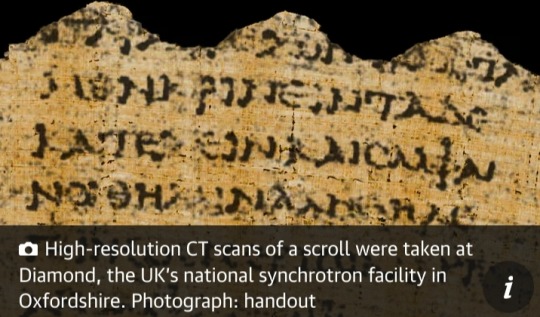
Scholars of antiquity believe they are on the brink of a new era of understanding after researchers armed with artificial intelligence read the hidden text of a charred scroll that was buried when Mount Vesuvius erupted nearly 2,000 years ago.
Hundreds of papyrus scrolls held in the library of a luxury Roman villa in Herculaneum were burned to a crisp when the town was devastated by the intense blast of heat, ash and pumice that destroyed nearby Pompeii in AD79.
Excavations in the 18th century recovered more than 1,000 whole or partial scrolls from the mansion, thought to be owned by Julius Caesar’s father-in-law.
However, the black ink was unreadable on the carbonised papyri and the scrolls crumbled to pieces when researchers tried to open them.
The breakthrough in reading the ancient material came from the $1m Vesuvius Challenge, a contest launched in 2023 by Brent Seales, a computer scientist at the University of Kentucky, and Silicon Valley backers.
The competition offered prizes for extracting text from high-resolution CT scans of a scroll taken at Diamond, the UK’s national synchrotron facility in Oxfordshire.
On Monday, Nat Friedman, a US tech executive and founding sponsor of the challenge, announced that a team of three computer-savvy students, Youssef Nader in Germany, Luke Farritor in the US, and Julian Schilliger in Switzerland, had won the $700,000 (£554,000) grand prize after reading more than 2,000 Greek letters from the scroll.

Papyrologists who have studied the text recovered from the blackened scroll were stunned at the feat.
“This is a complete gamechanger,” said Robert Fowler, emeritus professor of Greek at Bristol University and chair of the Herculaneum Society.
“There are hundreds of these scrolls waiting to be read.”
Dr Federica Nicolardi, a papyrologist at the University of Naples Federico II, added:
“This is the start of a revolution in Herculaneum papyrology and in Greek philosophy in general. It is the only library to come to us from ancient Roman times.”
“We are moving into a new era,” said Seales, who led efforts to read the scrolls by virtually unwrapping the CT images and training AI algorithms to detect the presence of ink.
He now wants to build a portable CT scanner to image scrolls without moving them from their collections.
In October, Farritor won the challenge’s $40,000 “first letters” prize when he identified the ancient Greek word for “purple” in the scroll.
He teamed up with Nader in November, with Schilliger, who developed an algorithm to automatically unwrap CT images, joining them days before the contest deadline on 31 December.
Together, they read more than 2,000 letters of the scroll, giving scholars their first real insight into its contents.
“It’s been an incredibly rewarding journey,” said Youssef.
“The adrenaline rush is what kept us going. It was insane. It meant working 20-something hours a day. I didn’t know when one day ended and the next day started.”
“It probably is Philodemus,” Fowler said of the author.
“The style is very gnarly, typical of him, and the subject is up his alley.”
The scroll discusses sources of pleasure, touching on music and food – capers in particular – and whether the pleasure experienced from a combination of elements owes to the major or minor constituents, the abundant or the scare.
“In the case of food, we do not right away believe things that are scarce to be absolutely more pleasant than those which are abundant,” the author writes.
“I think he’s asking the question: what is the source of pleasure in a mix of things? Is it the dominant element, is it the scarce element, or is it the mix itself?” said Fowler.
The author ends with a parting shot against his philosophical adversaries for having “nothing to say about pleasure, either in general or particular."



Seales and his research team spent years developing algorithms to digitally unwrap the scrolls and detect the presence of ink from the changes it produced in the papyrus fibres.
He released the algorithms for contestants to build on in the challenge.
Friedman’s involvement proved valuable not only for attracting financial donors.
When Seales was meant to fly to the UK to have a scroll scanned, a storm blew in cancelling all commercial flights.
Worried they might lose their slot at the Diamond light source, Friedman hastily organised a private jet for the trip.
Beyond the hundreds of Herculaneum scrolls waiting to be read, many more may be buried at the villa, adding weight to arguments for fresh excavations.
"The same technology could be applied to papyrus wrapped around Egyptian mummies," Fowler said.
These could include everything from letters and property deeds to laundry lists and tax receipts, shining light on the lives of ordinary ancient Egyptians.
“There are crates of this stuff in the back rooms of museums,” Fowler said.
The challenge continues this year with the goal to read 85% of the scroll and lay the foundations for reading all of those already excavated.
Scientists need to fully automate the process of tracing the surface of the papyrus inside each scroll and improve ink detection on the most damaged parts.
“When we launched this less than a year ago, I honestly wasn’t sure it’d work,” said Friedman.
“You know, people say money can’t buy happiness, but they have no imagination. This has been pure joy. It’s magical what happened, it couldn’t have been scripted better."
Source: The Guardian
youtube
How the Herculaneum Papyri were carbonised in the Mount Vesuvius eruption – Video
5 February 2024
#Herculaneum Papyri#Mount Vesuvius#volcanic eruption#antiquity#artificial intelligence#papyrus scrolls#Pompeii#AD79#Herculaneum#Youtube#carbonised papyri#$1m Vesuvius Challenge#Brent Seales#Diamond#papyrologist#Herculaneum papyrology#Ancient Rome#CT images#ai algorithms
9 notes
·
View notes
Text
Idk who will read this rn as I made this account yesterday because I decided to quit Instagram and move my art here. But I swear that I love the fact that Tumblr doesn't have a stupid ass algorithm that doesn't let most people see your creations, or the fact that hashtags are actually useful here.
For those who don't know, Instagram made a new update were you can't see the recent posts in hashtags unless they're popular (top posts and recent top posts) . So now it's only the algorithm that decides which posts it will let you see. Horrible.
#instagram#ai algorithms#instagram algorithm#artists on tumblr#illustrators on tumblr#instagram artist#art account#art advice#content creator#artist struggles#rant#instagram update#artist rant#Tumblr is superior#Tumblr>>>#tumblr best#tumblr migration#instagram migration#fuck instagram#vent#vent text#vent in tags
17 notes
·
View notes
Text
Embracing the Revolution: Generative AI and Custom Software Development
Generative AI represents a paradigm shift in custom software development, offering unprecedented opportunities for innovation, efficiency, and creativity. By harnessing the power of AI algorithms, developers can accelerate the coding process, explore new design possibilities, and deliver highly customized solutions tailored to individual needs. As we embark on this journey of technological advancement, it's essential to embrace the transformative potential of generative AI while upholding ethical principles and ensuring inclusive and responsible development practices.
#Software Development#Custom Software Development#artificial intelligence#software engineering#AI#generative AI#ai algorithms#Revolution#technology#machine learning#programming
2 notes
·
View notes
Text
Another case of “department uses tool that they won’t allow to be interrogated that seems to flag people on protected characteristics without actually interrogating *if* those characteristics actually do equate to a risk for an individual case” being used against marginalised people for something as incredibly essential as whether they’re allowed to care for their kid.
Without *anyone* in the system interrogating whether the incident that brought the family into contact with CPS was caused by something that isn’t related to quality of parental care, like another medical condition, or whether being in the *foster care system* is in fact damaging the child in and of itself.
I am incandescent on reading this. Yes, I am aware media can slant things, but a) story they focus on shows *so* many characteristics of systemic issues we see all over the place, and b) the statistics quoted in it about 80% of disabled parents in that state having their kids removed speak for themselves.
They focus on AI in the article because it’s a hot button issue rn, but the only real relevance of it is that the algorithms it uses are not being divulged, which suggests to me that they are *absolutely* using protected characteristics as risk factors without interrogating *why* those effects are seen or exploring ways to mitigate them that don’t involve violating the human rights of everyone involved, including the kids that are supposedly being protected.
It’s *incredibly* notable that CPS services using such risk assessment systems, whether AI is involved or not, remove children from IBPOC parents, *particularly* indigenous parents and families, at an enormously inflated rate without addressing how removal from their cultures and communities in childhood affects those children for their entire lives
#disabled#disableism#disability#systemic disableism#systemic racism#institutional racism#institutional disableism#child protective services#ai algorithms#capitalism#dystopian af#disabled child#protect disabled kids#protect black children#protect indigenous children
8 notes
·
View notes
Text

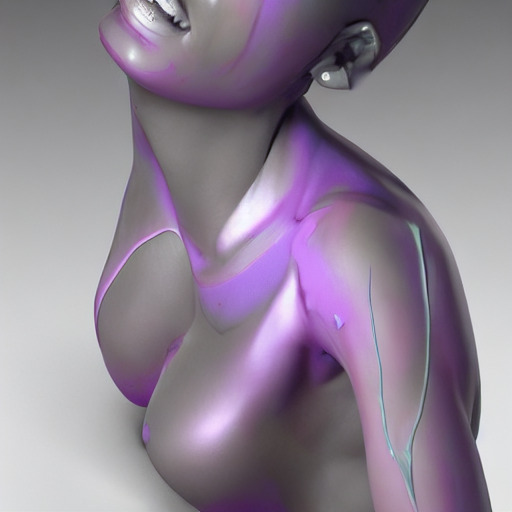


It has taken a while to understand the language of AI drawing. It's not really as easy as just typing in something random, unless you like surprises. I will post some of the lesser results.. laughing...
#digital#art#illustration#liquidwoman#ai algorithms#ai generated#artists on tumblr#ai artwork#nightcafecreator#nightcafe
3 notes
·
View notes
Text
Learn Amazing Secrets Of AI Algorithms With Be10x
AI algorithms are the secret sauce behind the impressive feats of artificial intelligence. They’re basically a set of instructions that empower computers to learn and make decisions based on data, mimicking some aspects of human intelligence.
Think of them as a detailed roadmap, guiding computers through complex calculations and analyses. This allows them to perform tasks once thought to be exclusively human.
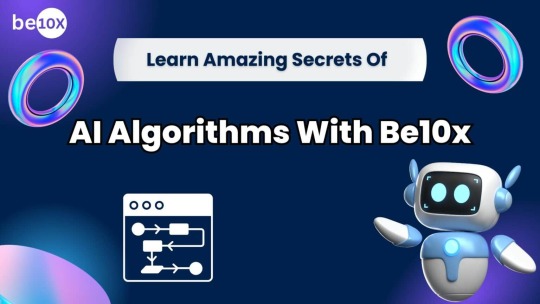
What can AI algorithms do?
Master data analysis: AI algorithms can sift through massive amounts of information, uncovering hidden patterns, trends, and connections that we might miss.
Make smart decisions: Based on their analysis, AI algorithms can make predictions, classifications, and recommendations. For instance, they can predict customer churn or suggest products you might like based on your purchase history.
Continuously learn and adapt: Unlike static computer programs, AI algorithms can learn and improve over time. They can adjust their behavior based on new information and experiences, becoming more accurate and sophisticated as they go.
Different types of AI algorithms:
Supervised learning: Imagine a helpful teacher — supervised learning algorithms learn from labeled data, where each piece of data has a specific category or outcome attached. This allows them to perform tasks like classification and regression.
Unsupervised learning: Unlike supervised learning, unsupervised algorithms are like independent explorers. They have to discover patterns and relationships in data on their own, which is useful for tasks like clustering and dimensionality reduction.
Reinforcement learning: Think of trial and error — reinforcement learning algorithms learn through experience. They receive rewards for good decisions and penalties for bad ones, constantly refining their behavior to maximize rewards.
Natural Language Processing (NLP) algorithms: These are AI superstars specifically designed to understand, process, and generate human language. They power chatbots, language translation, and more.
Why should you learn about AI algorithms?
There are many compelling reasons to dive into the world of AI algorithms:
Become a problem-solving whiz: AI tools powered by sophisticated algorithms can automate problem-solving. Learning these algorithms equips you to leverage AI for tasks like data analysis, pattern recognition, and better decision-making.
Stay ahead of the curve: AI is rapidly integrating into various industries. Understanding AI algorithms ensures you can effectively use AI tools, making you valuable across sectors.
Boost your productivity: AI tools can automate routine tasks, freeing up your time for more strategic activities. Learning the algorithms behind them allows you to leverage AI for increased efficiency.
Advance your career: Proficiency in AI algorithms positions you for career growth. Employers increasingly seek individuals who can navigate and optimize AI tools.
Make data-driven decisions: AI tools can assist in making informed decisions based on data. Understanding the algorithms empowers you to use AI effectively for analyzing vast datasets and extracting insights.
Explore entrepreneurial opportunities: Learning AI algorithms opens doors to creating or optimizing AI-powered solutions for specific business needs.
Adapt to change: The field of AI is constantly evolving. By understanding AI algorithms, you’ll stay adaptable in this rapidly changing landscape.
Make a global impact: AI tools have the potential to address global challenges. By understanding the algorithms that drive these tools, you can contribute to solving complex problems.
Read more to get detailed information on the secret of AI algorithms.
Ready to learn more?
The Be10x AI Mastery Program is a great place to start your journey into the exciting world of AI algorithms and tools. This program offers a unique opportunity to master cutting-edge AI tools without needing prior technical knowledge. In just a few hours, you’ll gain proficiency in AI tools that can revolutionize the way you work. Don’t miss out on this chance to boost your career with the power of AI!
0 notes
Text
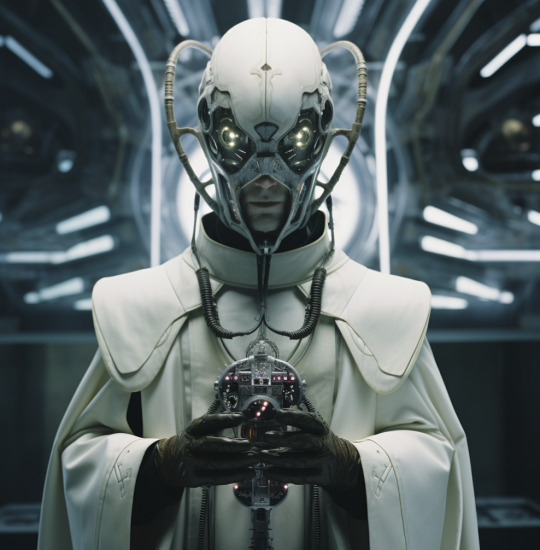
"In the temple of technological religion, humanity kneels before the gods of algorithms, offering the data of its being as a digital sacrifice."
Rootsinthefuture
#future#rootsinthefuture#cyberpunk#sci-fi#futuristic#science fiction#cyberart#sci fi#robots#androids#religion#algorithmes#ai algorithms#Ai
15 notes
·
View notes
Text
The 4 biggest ideas in philosophy, with legend Daniel Dennett - Big Think
More books to read. ❤️
0 notes
Text





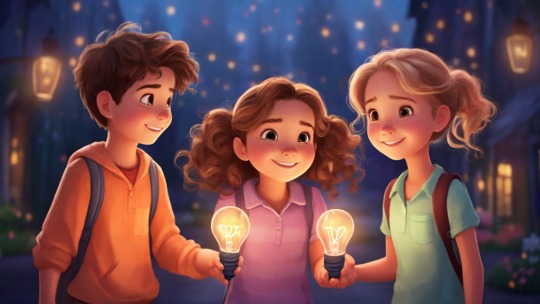
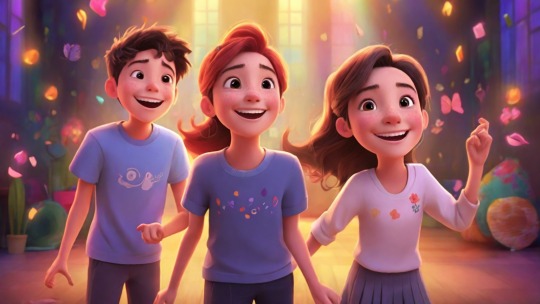





#ai tumblr#artificial intelligence#machine learning#data analytics#social media automation#ai bots#content generation#creative writing ai#tumblr marketing#chatbots#ai algorithms#digital marketing#automated posts#ai tools#machine intelligence#online branding#content curation#ai technology#blog automation#smart analytics#tumblr growth#digital content creation#social media insights#virtual assistants#automated engagement
1 note
·
View note
Text
AI art detection methods: a starter guide
so here it is, my starter guide on how to detect AI art.
to set the tone of this guide: i am not really the type to go full-ass pitchforks and torches and call someone a bad person or dumb for liking, reblogging, or even using AI art for inspiration/mood board/etc purposes without knowing that it was AI generated in the first place.
it has become incredibly difficult to detect these things as the models are becoming more and more accurate with certain subjects. it's why i decided to write this guide in the first place. i take these situations as learning opportunities, to use corpo speak lmao, and so i don't think there's any value in shaming anyone for liking/reblogging smth "SO OBVIOUSLY AI."
they might not have known, so teach them!
after all, everyone starts somewhere, so it's best to help teach when you can! do not use these methods to bully people or falsely accuse people because i will know and be very disappointed in you. >:(
so if you are concerned about reblogging something that is AI-generated, for whatever reason it may be, i can provide some quick[citation needed] tips that i use to detect it with some level of accuracy. this is especially useful when people don't tag their pictures as AI-generated.
PLEASE NOTE: this is not, by any means, meant as a catch-all, 100% success rate way of detecting AI art. learning models are trained off of existing art styles, after all, and you may come across a legitimate artist whose style is widely replicated by algorithms. this can give the perception that the artist is the one faking it.
check your work before accusing anyone. in fact, don't do public callouts unless you have irrefutable proof. a hunch or coincidences are not irrefutable proof. it'll save everyone a lot of headaches if you end up being wrong and you could also potentially damage someone's career (and risk getting sued for it).
a lot of these steps come with the expectation that you will do some legwork to figure out if something is actually a generated image or not. it's not always the same every time and it will rapidly change depending on what model is used and what prompts are used. these are guidelines, not tenets.
anyway, in no particular order:
one: stylistic and subject consistency
if you see a post in which several images are presented in a way that suggests they are a set (i.e.: the same subject at different angles), check for consistency.
a bouquet of flowers should not have the flowers positioned in different ways or omitted entirely between shots, especially if you suspect it's meant to be presented as photography. most photographers won't rearrange flowers between shots unless they're trying to achieve a specific sort of effect. in short, if it's just a few aspects of the subject that are omitted but the general piece looks "the same," it's probably not a photo.
if it's presented as a hand-drawn piece, rearranged or missing pieces are also a flag; speaking as an artist, if i were to redraw something at a different angle, i wouldn't omit stuff that should still be visible in the new angle.
it is also good to check the artist's blog for consistency in style; if they are posting a lot of really detailed landscapes in one style and then posting anime-style stuff in another, that can be a flag.
that's not to say that artists cannot have multiple styles (i do!) but it's exceedingly rare that someone who is a wizard at photorealistic ethereal landscapes would also be a wizard at big tiddy animu waifus and amazingly smooth calarts style cartoons. i'm talking like "this looks like it was a cel from an anime" and "this looks like a painting in the louvre." that level of dissonance.
dissonance is key; if it seems weird, be a little wary and look into it further.
two: lighting
AI models often struggle with lighting A LOT. no matter what the subject is, the lighting will oftentimes be incorrect in a lot of pieces. this can be hard for people to notice, but the light source should be consistent.
let's look at an example:
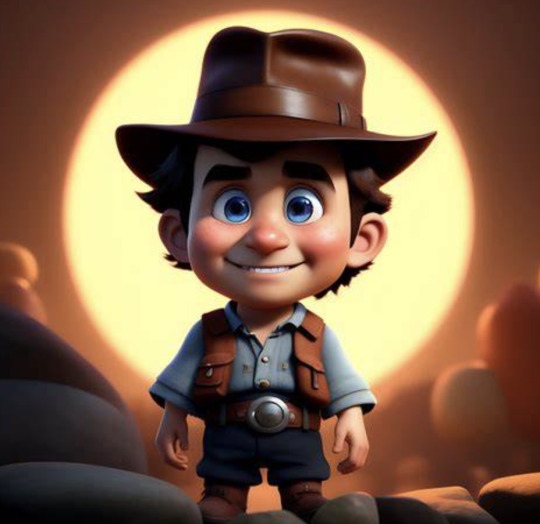
this fellow has a gigantic sun lighting the background. we can see that the background objects (such as what i think are trees?) are lit with that in mind for the most part. however, the foreground appears to be lit from the right (subject's left). with a light source that gigantic in the background, even in a cartoonish style, one would think the subject would be more in shadow, like this:

as a side-tangent, this is why a huge rule of thumb with photography is that the sun should be in front of the subject, unless you're going for a stylistic choice like this. reason being is the sun overtakes the entire frame when in the back.
of course, actual real-life artists struggle with this too! in which case, your best bet is to look at the artist's previous posts and see if there's consistency, as in point one.
three: types of mistakes and other common traits
so one way to check if you suspect a piece is AI generated is to look for the commonly known mistakes or "tells." you want to drill down, basically, from easiest to hardest to detect/notice:
on human/humanoid subjects, the most obvious one (to the point of it being a meme) is how the fingers/toes look. such as too many/not enough, but not done in a deliberately stylized way (i.e.: an anime waifu drawn in the style of genshin impact having 4 fingers is likely not a stylistic choice since it's not a typically cohesive thing to do since everything else will look more "realistic." by contrast, a cartoony phinneas & ferb-style character may be expected to only have 4 fingers and simplistic clothing or accessories).
too many/not enough arms/legs. legs that appear where they shouldn't (i.e.: a character sitting cross-legged but then an extra leg somehow hanging down off a chair, etc).
blurry/uneven lines. this one might be hard to visualize, so the best way i can describe it is when you copy and paste something in photoshop or even MS paint and then move it over slightly. it creates a jagged edge:


here's our happy example man that i drew using a touchpad lmao. he's v happy in the first picture!
but then in the second picture, we can see that he's sprouted a new arm (incidentally, he's still happy)! but it doesn't look right, does it? it's because i copied a selected area and pasted it, then moved it down slightly.
you will find a lot of AI art will have aspects to it that look very similar to this, typically in areas where there's a lot of repetition, like grass or clouds.
weirdly detailed "bloom" or "smoothness" to the point of something looking very artificial, even for an artificial subject. the willy wonka knock-off installation in glasgow used images that are very obviously AI generated and embody this weirdness pretty clearly:

"bloom" is basically a term for nearly airbrushed-looking lighting. look closely and you'll see that everything has this sort of "sheen" or "glow" to it in a way that makes it look very strange and unnatural, but not in a way that looks handmade.
impossible geometry and/or landscapes that don't make logical sense. this one is probably one of the harder ones to detect because it often requires staring at an image for a bit, like a hidden object puzzle. to use the willy wonka knock-off pic again, the waterfall itself doesn't make sense:
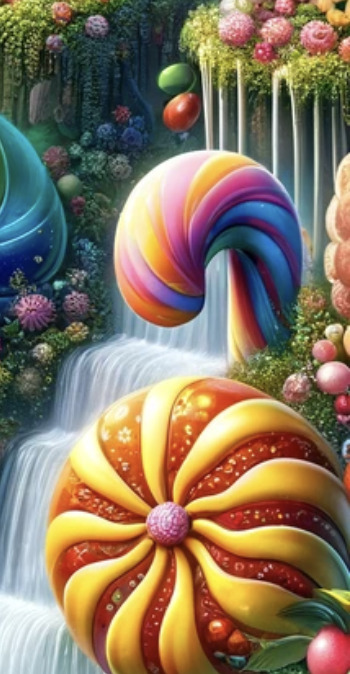
where is the water coming from? it appears that it's coming from straight above just going by the direction of the "strokes" there, but as we see, there is no water source feeding this waterfall. it looks like the AI sort of started to create a waterfall on the rocks/grassy part above but got distracted or something halfway through (which is something that happens a lot with algorithms, oddly enough).
background objects that look fine at a glance, but when taken apart individually, are very odd/slapped together.

at a glance, this looks to be just a stock image of someone's drawing of a bunch of US currency and whatnot. but looking closer:


sure is a square-looking dollar bill there!
and on the other image, it appears as though the currency strap is melting/merging into the bill...? along with a coin? or something?
to another point similar as above, algorithms will also do a lot of "like with like." that is to say, they have a hard time delineating between objects when those objects are close to the same color or shade and also positioned very close together. it's often why fingers can merge together into a mush/stump on humanoid subjects. so for that currency strap example, it's a cream-ish color that is very close to the light green seen on the dollar bill design's negative space. this is likely why the algorithm merged them together; it doesn't know exactly what it's doing, so objects will bleed into each other as long as it still gives the impression of the goal object/output.
four: don't beat yourself up over it
in closing, a piece of AI art will almost always look "confident." it'll also almost look perfect and skilled in that way when first looking at it. and though it may be distractingly perfect in that first glance, it will likely look incredibly imperfect when you look closer. imperfect in the way an algorithm would mess up.
that's honestly a large part as to why many people don't pick up on what pieces are generated vs not. these pieces are eye-catching and skillfully presented enough to the point of people not noticing the finer details. the more "technically skilled" a piece is, the more often that people will gloss past the mistakes. how many times have you seen posts where someone says, "i find new things in this piece every time i look at it?" that's why. we're wired to look at the big picture, literally. and that's not anyone's fault. so don't beat yourself up over it or think you're an idiot if you weren't able to tell the difference.
remember: this is an insanely new thing. while image generating itself isn't necessarily new, and programs like photoshop and other image editing software have been using algorithms for many of their functions for probably well over a decade now, this specific type of image generation is still fresh. and it's constantly changing. unless you're in the tech space, you may not even realize the advancements being made, and that's okay! you can always learn more. just be alert and aware, as this will also help you combat a far more sinister issue, which is deep fakes and other false info being spread. double-check everything.
so those are the main methods to start with if you want to try and improve your generated image detection abilities! i hope this post was informative and helpful!
#AI art#learning models#AI algorithms#image post#text post#tutorial#guide#how to#technology#long post
1 note
·
View note
Text
#AI#AI Algorithms#AI-driven Chatbots#AI-Driven Interviews#AI-Optimized Resumes#Artificial Intelligence#chatbot#ChatGPT#ChatGPT as Job Search Tool#Company Research#Cover Letter Assistance#Enhanced Job Search#Future of AI in Job Search#Industry Insights#interview preparation#job hunting#Job Matching#Job search#job search related blogs#jobsbuster#openai#Resume Assistance#Technology#UK jobs
0 notes
Text
The Impact of AI on Everyday Life: A New Normal
The impact of AI on everyday life has become a focal point for discussions among tech enthusiasts, policymakers, and the general public alike. This transformative force is reshaping the way we live, work, and interact with the world around us, making its influence felt across various domains of our daily existence.
Revolutionizing Workplaces
One of the most significant arenas where the impact…

View On WordPress
#adaptive learning#AI accessibility#AI adaptation#AI advancements#AI algorithms#AI applications#AI automation#AI benefits#AI capability#AI challenges#AI collaboration#AI convenience#AI data analysis#AI debate#AI decision-making#AI design#AI diagnostics#AI discussion#AI education#AI efficiency#AI engineering#AI enhancement#AI environment#AI ethics#AI experience#AI future#AI governance#AI healthcare#AI impact#AI implications
1 note
·
View note
